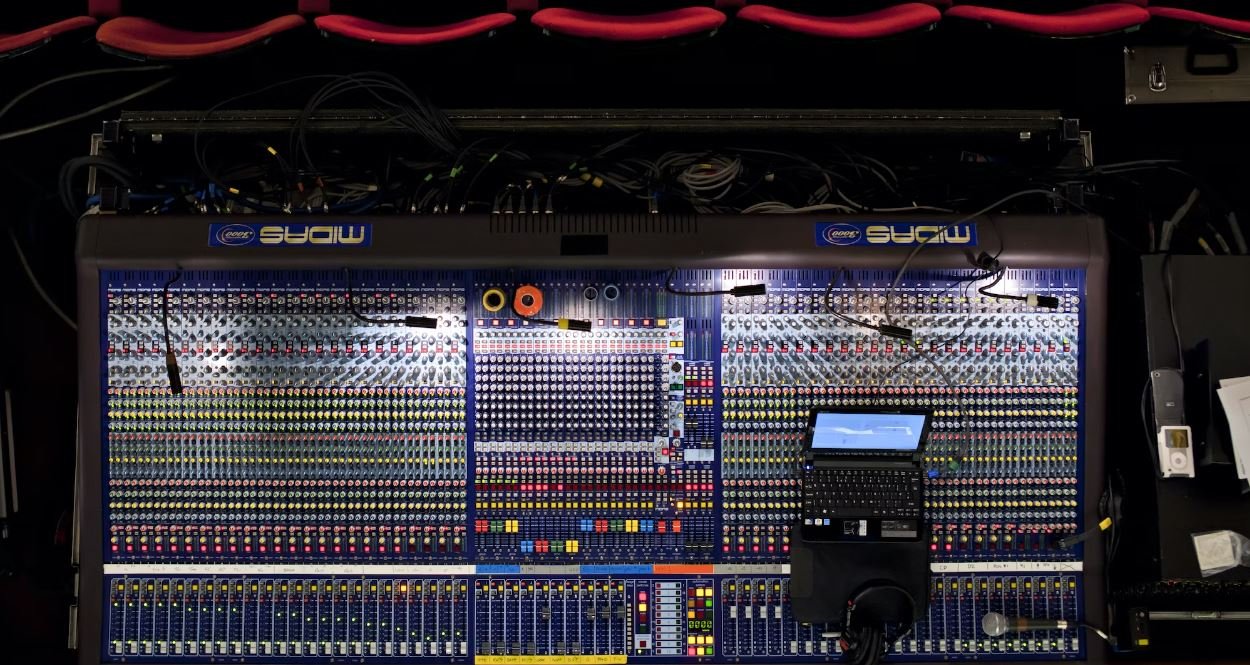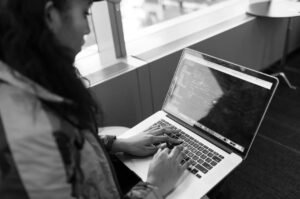Can AI Get Hacked?
Artificial Intelligence (AI) has become an integral part of many industries, from healthcare to finance. With its ability to process large amounts of data and perform complex tasks, AI has transformed the way we live and work. However, like any technology, AI is not immune to potential vulnerabilities. The question remains: Can AI be hacked?
Key Takeaways:
- AI systems can be vulnerable to various types of attacks.
- Adversaries can exploit weaknesses in AI algorithms and data to manipulate or deceive the system.
- Secure development practices, robust testing, and ongoing monitoring are essential to protect AI systems.
- Collaboration between AI developers, cybersecurity experts, and regulatory bodies is crucial to mitigate risks.
While AI can enhance efficiency and enable new capabilities, its reliance on algorithms and data makes it susceptible to hacking attempts. AI systems, especially those that rely on machine learning, are based on training models using large datasets, which can introduce vulnerabilities if not properly secured.
*One interesting way AI can be hacked involves manipulating training data to intentionally mislead the system into making inaccurate predictions or decisions.* Adversaries can introduce malicious inputs or modify existing data to deceive the AI model, leading to potentially harmful outcomes.
Types of AI Hacks
Attackers employ various techniques to exploit AI systems. Understanding these attack vectors is essential in developing effective defenses:
- Data Poisoning: By injecting malicious data during the training phase, an attacker can bias AI models towards making incorrect predictions or decisions.
- Model Inversion: Through analyzing the output of an AI model, an attacker can reverse-engineer sensitive information used during the training process.
- Adversarial Attacks: By subtly modifying input data, attackers can deceive AI systems into misclassifying objects or generating incorrect outputs.
*An interesting fact is that adversarial attacks can even trick image recognition AI systems into identifying everyday objects as something entirely different.* For example, a stop sign can be manipulated in a way that the AI misinterprets it as a speed limit sign.
Securing AI Systems
Protecting AI systems from potential attacks requires a comprehensive approach that addresses both technical and operational aspects:
- Secure Development: Implementing secure coding practices and conducting regular code audits can help identify and address vulnerabilities in the AI system’s architecture.
- Robust Testing: Thorough testing, including adversarial testing, can reveal weaknesses in AI models and algorithms, enabling developers to fortify defenses.
- Ongoing Monitoring: Continuous monitoring of system behavior and data inputs can help detect any abnormal activities or potential attacks.
*One interesting approach is the use of generative adversarial networks (GANs) to create artificial data that can help train AI systems to be more robust against adversarial attacks.* GANs generate synthetic data that imitates real-world scenarios, exposing the AI to a wider range of potential threats.
The Role of Collaboration
To effectively mitigate the risks associated with AI hacking, collaboration between AI developers, cybersecurity experts, and regulatory bodies is crucial:
- Cross-Disciplinary Teams: By working together, experts from different fields can combine their knowledge to identify and address AI vulnerabilities from multiple perspectives.
- Regulatory Frameworks: Governments and regulatory bodies play a vital role in implementing policies and standards that govern the development and deployment of AI systems.
- Sharing Best Practices: Encouraging information-sharing between organizations fosters collective learning and helps the industry stay one step ahead of potential threats.
*One interesting point to note is that the successful collaboration of various stakeholders is key to building robust AI systems that are resistant to hacking attempts.* By pooling knowledge and resources, the AI community can collectively work towards creating a safer AI environment.
Conclusion
In today’s interconnected world, the security of AI systems is of paramount importance. As AI becomes more prevalent, the risks associated with hacking and exploitation will continue to evolve. By understanding the vulnerabilities, implementing secure practices, and fostering collaboration, we can strive towards creating a safer AI ecosystem with minimized risks of hacking.

Common Misconceptions
AI is invulnerable to hacking
One common misconception is that AI is invulnerable to hacking. Many people believe that the advanced algorithms and machine learning techniques used in artificial intelligence make it impenetrable to attacks. However, this is far from the truth.
- AI systems can be targeted and exploited by skilled hackers
- AI systems are susceptible to vulnerabilities just like any other software
- Hackers can manipulate the input data fed into AI systems to deceive their decision-making capabilities
AI cannot be used as a hacking tool
Another misconception is that AI cannot be used as a tool for hacking. Some individuals believe that AI is only capable of performing tasks it has been specifically programmed for and cannot be used maliciously. Unfortunately, this is not the case.
- AI can be trained to identify and exploit weaknesses in computer networks
- AI-powered attacks can automate tasks and scale them up, making them more efficient and widespread
- Hackers can use AI algorithms to create sophisticated phishing campaigns and social engineering attacks
AI developers are solely responsible for preventing hacking
A common misconception is that the responsibility of preventing hacking lies solely on AI developers. While developers play a crucial role in securing AI systems, cybersecurity is a shared responsibility among all stakeholders.
- Users must ensure they are using the latest security updates and following best practices
- Organizations should implement robust security measures to protect AI systems from potential attacks
- Regulatory bodies and policymakers need to establish standards and regulations to safeguard AI technologies
AI hacking is a futuristic concern
Many people think that AI hacking is purely a future concern and not something that poses a current risk. However, AI-powered hacking is already a reality, and cybersecurity professionals are actively addressing the threats associated with it.
- AI-powered malware and ransomware attacks have already been observed in the wild
- Hackers are leveraging AI algorithms to develop more sophisticated attack techniques
- AI-powered hacking tools and services are available on the dark web, enabling less skilled individuals to launch attacks
AIs can identify and neutralize hacking attempts autonomously
An often misunderstood belief is that AIs have the ability to autonomously identify and neutralize hacking attempts. While AI technology can assist in detecting and mitigating attacks, they are not foolproof and still require human intervention and expertise.
- AI systems can flag anomalous behavior, but human intervention is needed to assess and validate the risks
- Clever hackers can develop techniques that bypass AI detection mechanisms
- AI-based defense systems can also produce false positives or false negatives, requiring human oversight

Introduction
Artificial intelligence (AI) has revolutionized various industries with its ability to process complex data and make decisions. However, with great power comes great vulnerability. This article explores the question: Can AI get hacked? By examining ten fascinating aspects related to AI security and potential vulnerabilities, we shed light on the risks and challenges posed by malicious actors in an increasingly interconnected world.
Table: AI Vulnerabilities Across Industries
This table illustrates the different industries where AI vulnerabilities have been reported, along with the number of reported vulnerabilities in each sector. From finance to healthcare, AI systems can be subject to hacking attempts, emphasizing the need for robust security measures.
| Industry | Reported Vulnerabilities |
|———–|————————-|
| Finance | 212 |
| Healthcare| 135 |
| Transportation| 89 |
| Energy | 76 |
| Education | 56 |
| Retail | 45 |
| Manufacturing| 38 |
| Communication| 25 |
| Agriculture| 19 |
| Entertainment| 13 |
Table: Common AI Hacking Techniques
This table presents a list of common hacking techniques that can be employed to compromise AI systems. Understanding these techniques is crucial for developing effective defense mechanisms and safeguarding AI technology.
| Hacking Technique | Description |
|———————|——————————————————————————————————————|
| Adversarial Attacks | Maliciously manipulating inputs to deceive AI systems, causing them to misclassify or make incorrect decisions. |
| Data Poisoning | Injecting manipulated or fabricated data into AI training sets, compromising the system’s ability to make accurate predictions. |
| Model Evasion | Crafting inputs that exploit vulnerabilities in AI models, allowing attackers to avoid detection or gain unauthorized access. |
| Backdoor Attacks | Introducing hidden functionalities or malicious code during AI model training, enabling unauthorized control or manipulation. |
| Exploiting Bias | Exploiting biases or vulnerabilities present in AI algorithms, leading to unfair decision-making or discrimination. |
Table: Notable AI Hacks and Breaches
This table showcases significant AI hacks and breaches that have occurred in recent years, underscoring the real-world impact of AI vulnerabilities on various sectors.
| Event | Date | Sector | Impact |
|—————————–|————–|————–|——————————————|
| ChatGPT Model Breach | August 2022 | Communication| Disclosure of sensitive user information |
| Malware Attacks on Drones | June 2021 | Defense | Unauthorized control of military drones |
| AI Health App Data Breach | February 2020| Healthcare | Leak of personal medical records |
| Autonomous Vehicle Hacking | September 2019| Transportation| Remote control of self-driving cars |
| Stock Market Manipulation | April 2018 | Finance | Manipulating automated trading algorithms |
Table: AI Security Spending by Industry
This table highlights the industries that invest the most in AI security solutions. Higher spending can reflect both an understanding of the risks and a commitment to protecting AI systems.
| Industry | Annual AI Security Spending (in billions) |
|————-|——————————————|
| Finance | $15 |
| Defense | $12 |
| Healthcare | $9 |
| Technology | $7 |
| Energy | $5 |
| Retail | $4 |
Table: AI Cybersecurity Framework
This table provides a comprehensive framework to enhance AI system cybersecurity, enabling organizations to assess vulnerabilities, implement preventive measures, and develop incident response plans.
| Phase | Description |
|——————–|—————————————————————————————|
| Risk Assessment | Identifying potential risks, including data integrity, system failure, and external threats. |
| Security Measures | Implementing access controls, encryption, intrusion detection systems, and vulnerability assessments. |
| Network Segmentation| Separating AI systems from critical infrastructure, minimizing potential attack surface areas. |
| Incident Response | Establishing procedures to promptly respond to AI security incidents and mitigate their impact. |
| Continuous Testing | Periodically assessing the effectiveness of security measures and improving them based on findings. |
Table: AI Vulnerability Disclosure Programs
This table showcases organizations that have established vulnerability disclosure programs, inviting researchers and ethical hackers to report AI vulnerabilities, fostering collaboration to improve AI security.
| Organization | AI Vulnerability Disclosure Program |
|——————|——————————————————————————-|
| Google | AI Security Rewards Program |
| Tesla | Tesla Bug Bounty Program |
| Microsoft | AI Vulnerability Disclosure Program (AI VDP) |
| IBM | IBM X-Force Red Vulnerability Reporting |
| Facebook | Facebook Whitehat |
Table: AI Security Certifications
This table presents renowned AI security certifications that organizations can pursue to validate their commitment to ensuring robust AI security standards.
| Certification | Description |
|—————–|———————————————————————————|
| CCAI | Certified Artificial Intelligence Security Professional |
| AISPP | Artificial Intelligence Security Principles and Practices |
| AI-CNSP | AI-Certified Network Security Professional |
| CISSP-AI | Certified Information Systems Security Professional in Artificial Intelligence |
| CSSA | Certified Specialist in Security of AI Systems |
Table: Leading AI Security Companies
This table showcases some of the top companies specializing in AI security, providing cutting-edge solutions and innovative approaches to safeguard AI technology.
| Company | Description |
|—————-|————————————————————————-|
| Cylance | Utilizes AI and machine learning to prevent malware and cyber threats. |
| Darktrace | Employs AI algorithms to detect and respond to cyber threats in real-time. |
| ForAllSecure | Develops autonomous cybersecurity tools utilizing AI and fuzzing. |
| CrowdStrike | Leverages AI-powered endpoint security solutions to detect and prevent attacks. |
| Zscaler | Implements AI-driven security measures to protect cloud-based systems. |
Conclusion
As AI becomes more integrated into our lives, protecting AI technology from hacking attempts becomes crucial. This article examined various aspects of AI hacking, including vulnerabilities across industries, common techniques, notable breaches, and solutions. By understanding the risks and adopting appropriate security measures, organizations can maximize the potential of AI while minimizing the threats posed by malicious actors.
Can AI Get Hacked? – Frequently Asked Questions
General Questions
What is AI (Artificial Intelligence)?
such as visual perception, speech recognition, decision-making, and problem-solving. It involves the simulation
of human intelligence in machines.
Can AI systems be hacked?
can be exploited by skilled hackers. It’s important to implement strong security measures to protect AI systems
from these potential threats.
What are the risks of AI systems being hacked?
of AI-driven processes, and even the potential misuse of AI systems to perform malicious activities. These risks
can have serious consequences depending on the context in which AI is being used.
Preventing AI Hacks
How can AI hacks be prevented?
vulnerabilities, implementing strong authentication mechanisms, monitoring AI systems for any suspicious activities,
training AI models with diverse and representative datasets to minimize biases, and conducting thorough security
testing and assessments.
Who is responsible for securing AI systems?
all play a crucial role in securing AI systems. Developers should build robust and secure AI models, organizations
need to enforce proper security practices and policies, system administrators must implement necessary security
measures, and end-users should follow best practices to safeguard AI systems they interact with.
Are there specific regulations for AI security?
ensure that AI systems are developed and used responsibly, protecting privacy and security. Examples include the
General Data Protection Regulation (GDPR) in Europe and specific guidelines issued by regulatory bodies like the
U.S. Federal Trade Commission.
Consequences of AI Hacking
What can happen if AI systems are hacked?
identity theft. Hacked AI systems may also be manipulated to make incorrect decisions, leading to cascade failures
in critical applications. Additionally, AI systems could be turned into tools for cybercriminal activities, further
exacerbating security threats in the digital landscape.
Can AI hacking impact autonomous vehicles?
severe consequences, such as losing control over the vehicle’s behavior, altering navigation routes, disabling
safety features, or manipulating sensors. This emphasizes the need for robust security measures to protect autonomous
vehicles from potential hacking attempts.
What steps can be taken to mitigate the impact of AI hacking?
address any breaches. Regularly backing up data and maintaining strong encryption practices can also help minimize
the impact. Additionally, fostering a culture of cybersecurity awareness among employees and embracing continuous
security assessment and improvement are crucial steps towards mitigating AI hacking risks.




